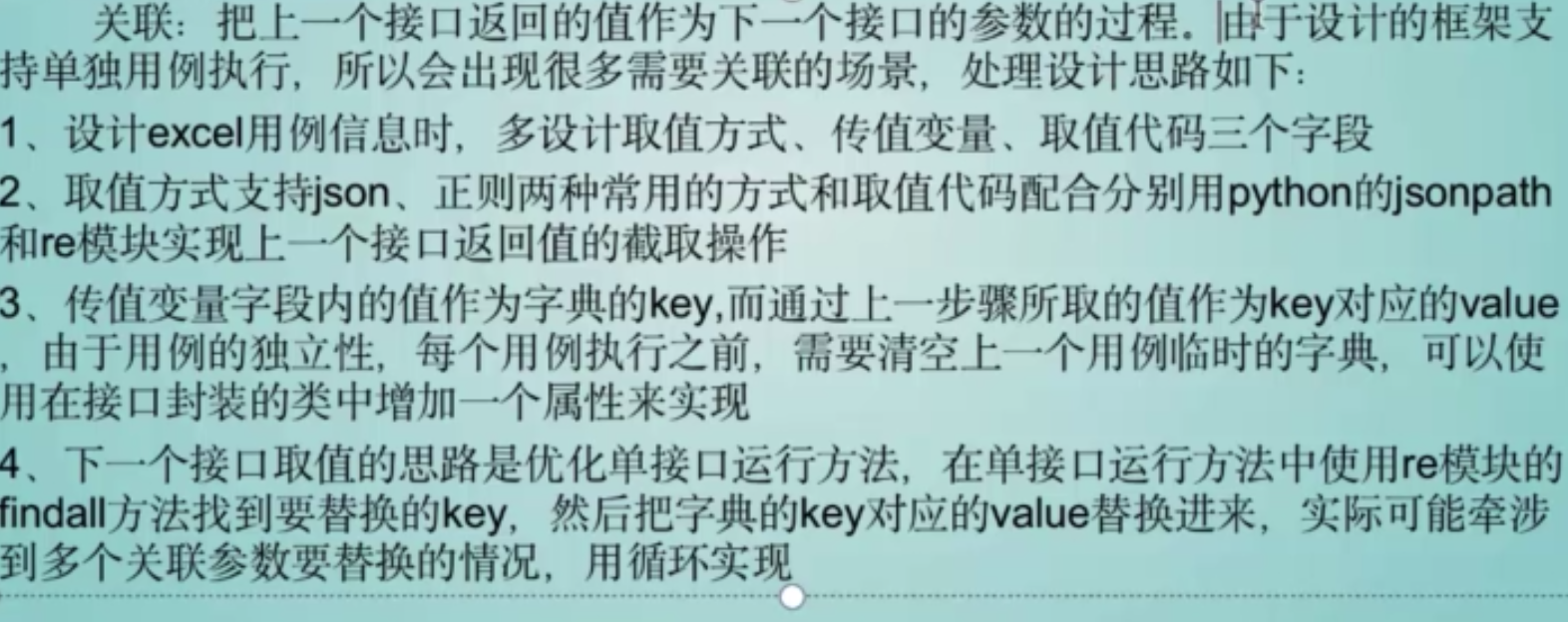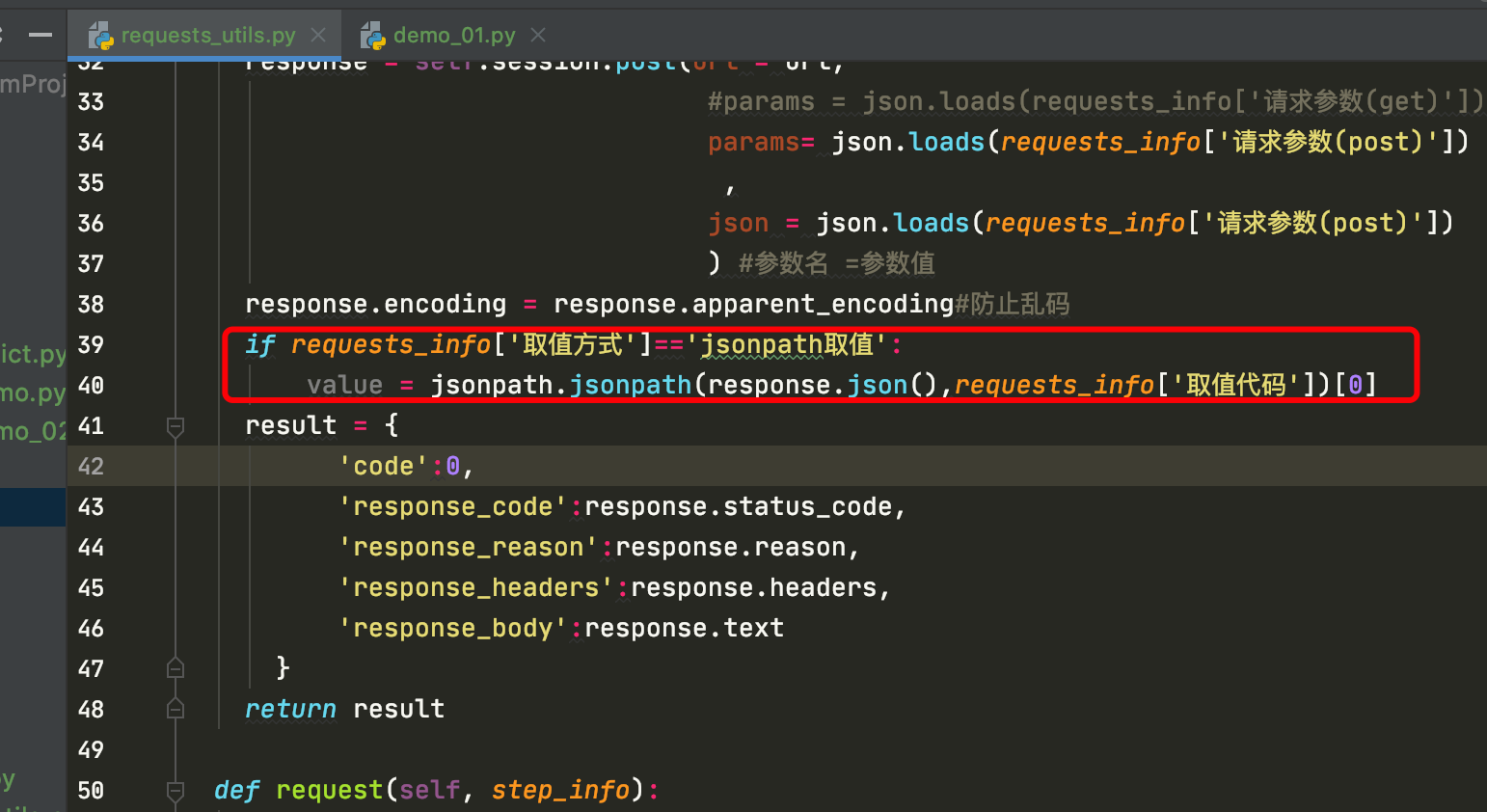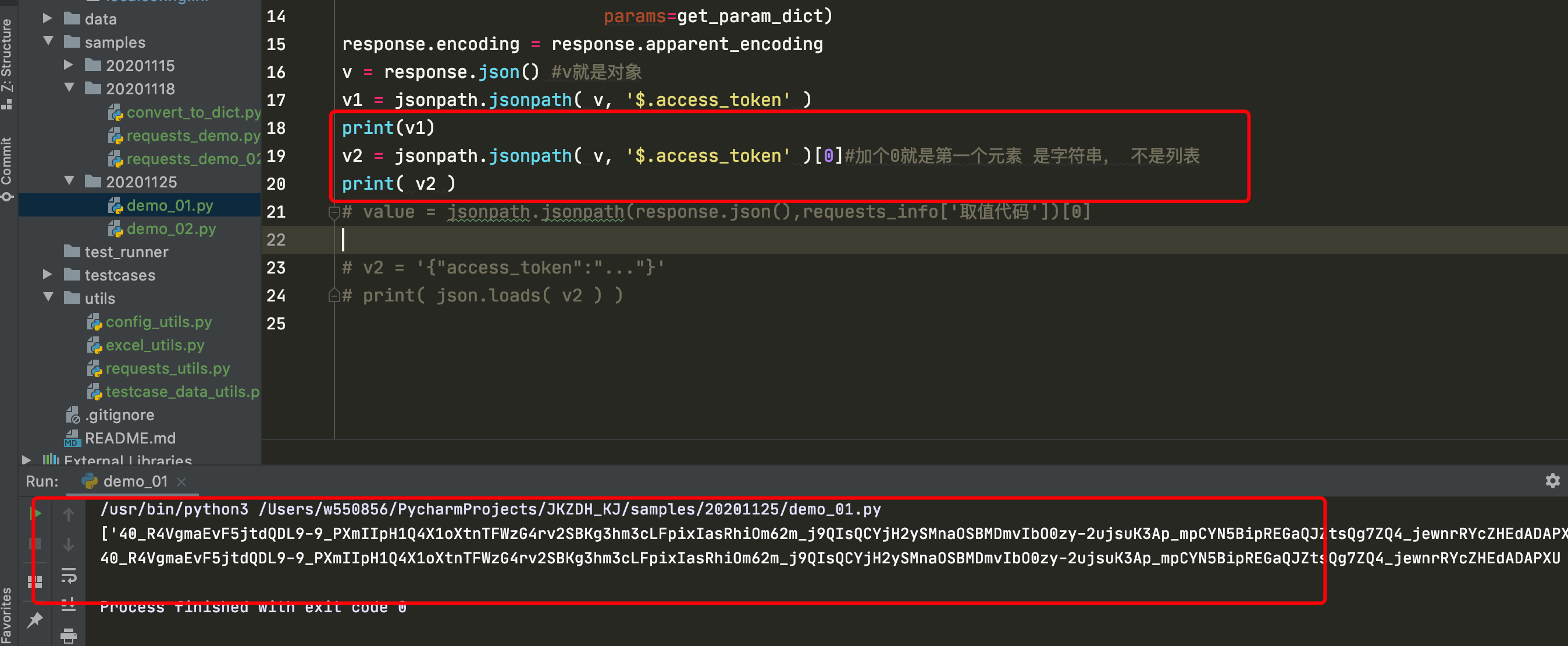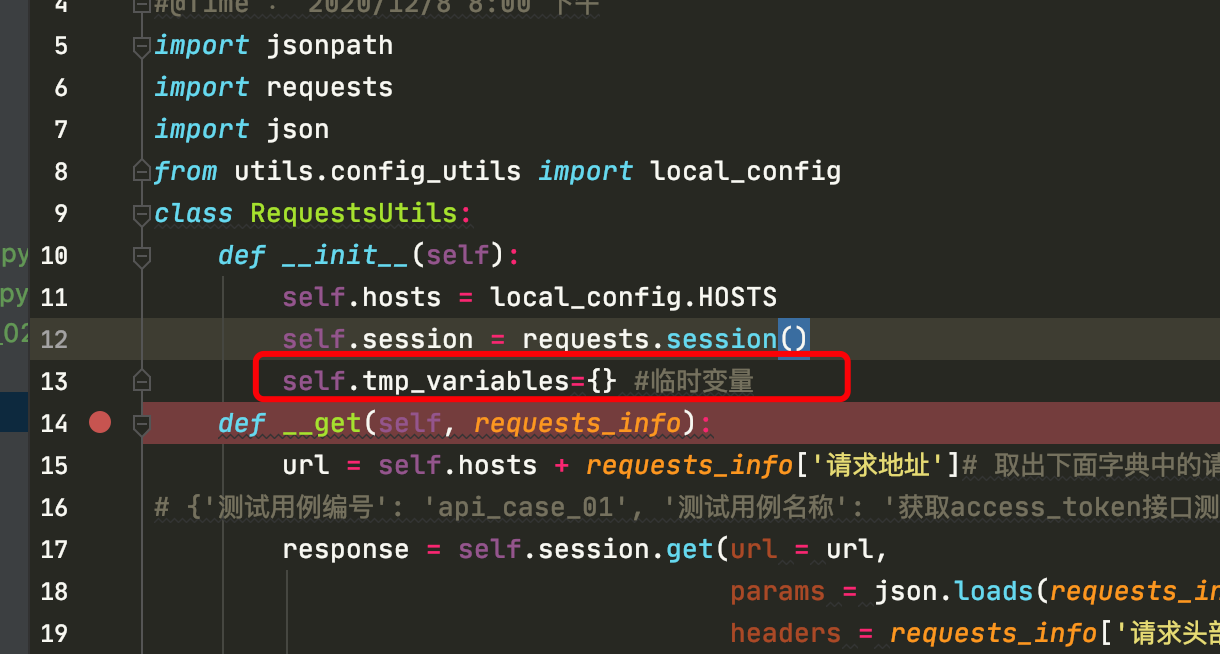


举例子:
demo01.py
import json
import requests
import jsonpath
session = requests.session()
get_param_dict={
"grant_type":"client_credential",
"appid":"wx55614004f367f8ca",
"secret":"65515b46dd758dfdb09420bb7db2c67f"
}
response = session.get( url='https://api.weixin.qq.com/cgi-bin/token',
params=get_param_dict)
response.encoding = response.apparent_encoding
v = response.json() #v就是对象
v1 = jsonpath.jsonpath( v, '$.access_token' )
print(v1)
v2 = jsonpath.jsonpath( v, '$.access_token' )[0]#加个0就是第一个元素 是字符串, 不是列表
print( v2 )
# value = jsonpath.jsonpath(response.json(),requests_info['取值代码'])[0]
# v2 = '{"access_token":"..."}'
# print( json.loads( v2 ) )

表格里面取出的值要送给变量:

key就是token

if requests_info['取值方式'] == 'jsonpath取值':
value = jsonpath.jsonpath(response.json(), requests_info['取值代码'])[0]
self.tmp_variables[requests_info['取值变量']] = value
#取值变量就是token ,value就是用正则表达式真正提取出来的一个值,放在一个字典里面成为一个真正的键值对,变量名就是临时字典key的名字

